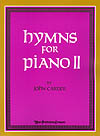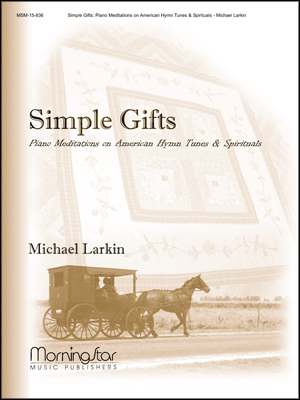- |
User Links
All Who Hunger, Gather Gladly
Hymn Information
- First Line
- All who hunger, gather gladly
- Author
- Sylvia G. Dunstan, 1955-1993
- Tune Name
- HOLY MANNA
- Harmonizer
- Norman E. Johnson (1973)
- Tune Source
- W. Moore <cite>Columbian Harmony</cite>, 1825
- Topic
- Biblical Names and Places: Manna · Jesus Christ: Bread of Life · Elements of Worship: Opening of Worship: Called And Gathered · Elements of Worship: Lord's Supper
Copyright Information
- Text Copyright
- © 1991 GIA Publications, Inc.
- Tune Copyright
- Harm. © 1973 Covenant Publications
- Reprint/Projection Information
- Words: Permitted with a license from OneLicense.net. If you do not own this license, please contact the copyright holder for permission.
- Music: Please contact the copyright holder for permission.
Scripture References
- · ·
Thematically related:
- st. 1 = ·
- st. 2 =
- st. 3 =
Further Reflections on Scripture References
Exodus 16 speaks of the provision of manna for the Israelites' hunger in the wilderness (stanza 1).
Matthew 5:6 points to the hungering for righteousness.
John 6:35-51 points to Jesus as the living bread (stanza 3).
Psalm 34:8 reminds us that “God is good” (stanza 1-3).
Confessions and Statements of Faith References
Further Reflections on Confessions and Statements of Faith References
God calls his children from many sources, languages, nations, and from a variety of social standings and personal needs. The Confessions are very clear on this. Belgic Confession teaches in Article 27, “This holy church is not confined, bound, or limited to a certain place or certain people.” Our World Belongs to God, paragraph 30 reminds us, “The Spirit gathers people from every tongue, tribe and nation...” and in paragraph 34 teaches that “all are welcome…the homeless…the broken…the sinner…the despised…the least…and the last…”
“Hunger,” “taste,” and “see” in this song point to the experience of being nourished at the table. The theme of the Lord’s Supper throughout the confessions is that of nourishment for our spirits. Belgic Confession, Article 35 speaks of the nourishment of our new “spiritual and heavenly” life within us, and Heidelberg Catechism, Lord’s Day 29, Question and Answer 79, speaks of the “true food and drink of our souls for eternal life.”
All Who Hunger, Gather Gladly
Tune Information
- Name
- HOLY MANNA
- Key
- G Major
- Meter
- 8.7.8.7 D
Recordings
All Who Hunger, Gather Gladly
Hymn Story/Background
Author Information
Her bachelor degree was earned from York University, and she received graduate degrees in theology and divinity from Emmanuel College, Toronto. In 1980, she was ordained by the Hamilton Conference of the United Church of Canada. During her career she served as a minister, a prison chaplain, and editor of a Canadian worship resource journal, Gathering.
In the summer of 1990, she was invited to lead the annual conference of the Hymn Society in the U.S. and Canada in a session exploring her hymnody. That exposure led to the publication of her texts In Search of Hope and Grace. A smaller collection Where the Promise Shines was published after her death in 1994. Many of her hymn texts have been set by contemporary composers.
Sylvia Dunstan died on July 25, 1993, almost four months after being diagnosed with liver cancer. She left behind a ministry that combined a compassionate concern for the needy and distraught with a consuming love of liturgy.


 My Starred Hymns
My Starred Hymns







